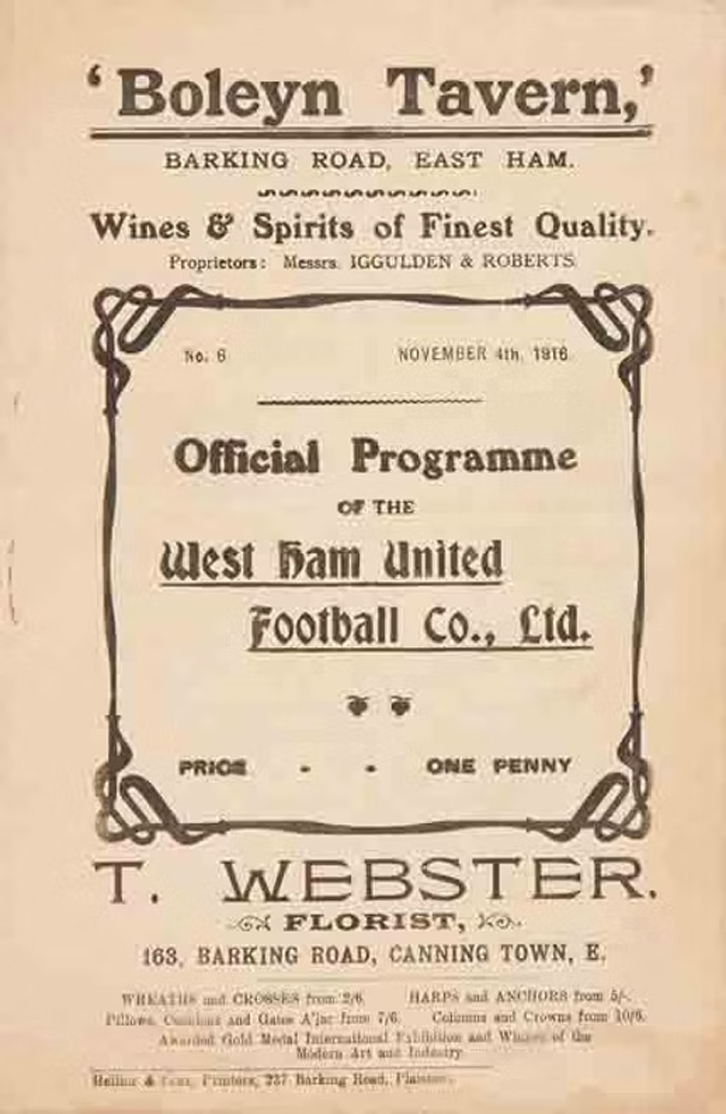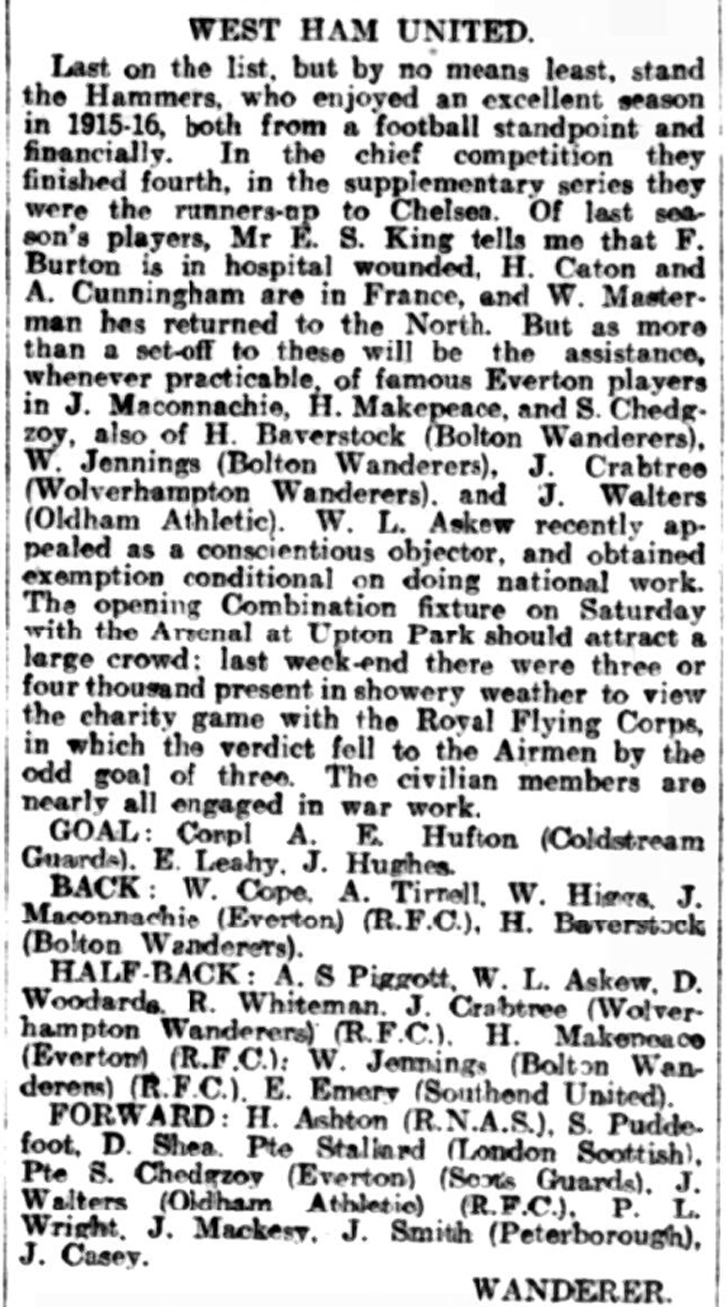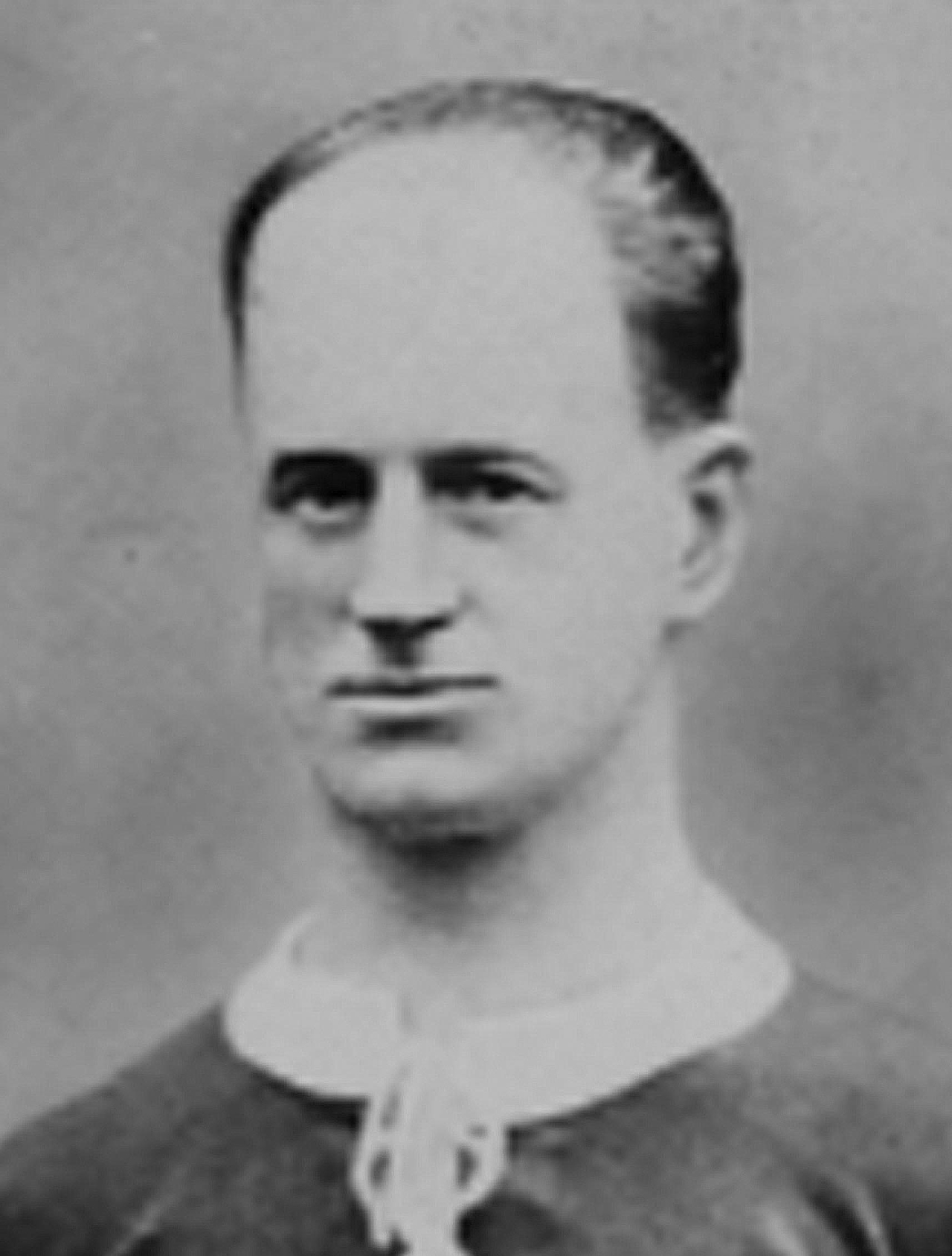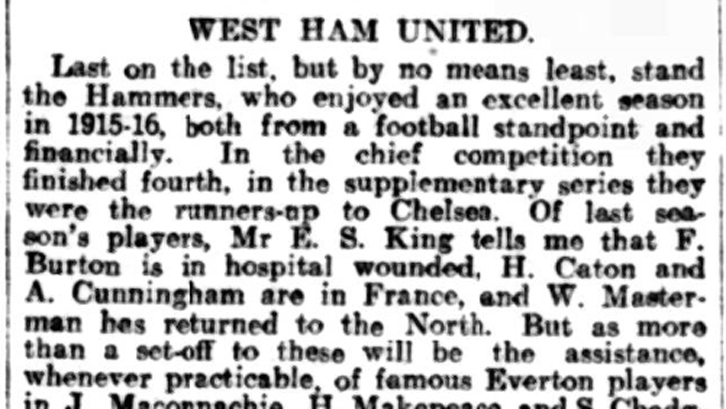We delve deep into The British Newspaper Archive to look at cuttings that shed light on West Ham United’s history...
When Europe was ravaged by the First World War between 1914-18, thousands of footballers swapped their kits for uniforms by signing up to fight for their country.
Famously, the 13th (Service) Battalion of the Essex Regiment was formed in December 1914 and many members of the West Ham United squad readily enlisted in the Armed Forces alongside their fellow East Londoners from every walk of life. Sadly, many of the ‘West Ham Pals’ never returned home.
By the summer of 1916, the war on the Western Front had become a brutal, attritional battle, with both sides entrenched in front lines through western Belgium and the far north-eastern corner of France and their aim seemingly switching from taking territory to inflicting the maximum possible number of casualties on their opponents. An estimated 1.1 million men were killed at the Battles of the Somme and Verdun.
The Football League was officially suspended at the end of the 1914/15 season but, to distract people from the horrors of the war and to save on resources, football continued to be played in England on a regional basis.

West Ham, who had finished fourth in the Southern League First Division that year, were one of 12 clubs placed in the London Combination for 1915/16. Manager Syd King was able to continue calling on some members of his Football League squad, alongside many other ‘guest’ players from other clubs who had enlisted and were stationed in the local area.
The Irons placed fourth in the principal tournament played between September 1915 and January 1916, then second in the shorter supplementary tournament contested between February and May 1916. Strikers Syd Puddefoot and Danny Shea scored 42 goals between them to spearhead King’s team.
With the war seemingly set to continue, a second season of the London Combination was scheduled, kicking-off on 2 September 1916. Before then, however, West Ham welcomed the Royal Flying Corps (RFC) to the Boleyn Ground for a fundraising match for war charities on Saturday 26 August, with the airmen – many of them footballers who had signed up to fly the first warplanes – soaring to a 2-1 victory.

An article published in The Sportsman newspaper the following Thursday, 31 August, previewed the new London Combination season and, 109 years later, provides an incredible insight into the challenges faced by football clubs and managers of the time.
King told the journalist, named ‘Wanderer’, that defender Frank Burton was unavailable as he was being treated for a war wound in France suffered serving with the Royal Fusiliers. By the end of the conflict, Burton had been injured SIX times, but recovered and returned to action in September 1916, then went on to play 64 times after West Ham had been elected to the Football League in 1919.
Two others, outside-right Harry Caton and Scottish inside-left Andy Cunningham, were fighting in France. Another inside-left, Sheffield United ‘guest’ player Bill Masterman, who had scored two goals in an 8-2 win over Arsenal on Christmas Day 1915, had ‘returned to the North’.
While four members of his squad were no longer available, King was able to call upon a number of fresh ‘guest’ players who had played in the Football League First Division before war broke out, before moving down South with their respective services.

From Everton, 1906 FA Cup winner Harry Makepeace was serving as a flight sergeant in the RFC. Makepeace also played cricket for Lancashire and, after the war, played four Test matches for England.
Two other Everton players were joining him in Claret and Blue – defender Jock Maconnachie was a mechanic in the RFC, while striker Sam Chedgzoy was a private in the Scots Guards. The future England international spent the season with West Ham, scoring ten goals in 22 appearances, and returned to score four more in six games in spring 1919.
The article also listed Bolton Wanderers defender Bert Baverstock, a private in the RFC, Oldham Athletic left winger Joe Walters, an air mechanic in the RFC, and Wolverhampton Wanderers’ Jack Crabtree.
The final ‘guest’ member of King’s squad listed was Bolton’s Wales international goalkeeper Billy Jennings, a corporal in the RFC, who actually never appeared in a game for West Ham. Incredibly, seven years later he was in goal for Bolton when they beat the Hammers 2-0 in the famous ‘White Horse’ 1923 FA Cup final at the newly completed Empire Stadium in Wembley.
It was hoped centre-half William Askew would be available as he had successfully applied to be a conscientious objector to the war and remain in England to ‘do national work’.
The article concluded with a full squad list replete with each player’s military commitment, with winger Herbert Ashton serving in the Royal Naval Air Service (RNAS).
Dozens of other players would be called upon throughout the 1916/17 campaign, with 49 appearing for King in total. Despite the high turnover in team selection, West Ham excelled, winning 30 out of 40 matches and scoring 110 goals on the way to winning the London Combination title by seven points ahead of local rivals Millwall.

